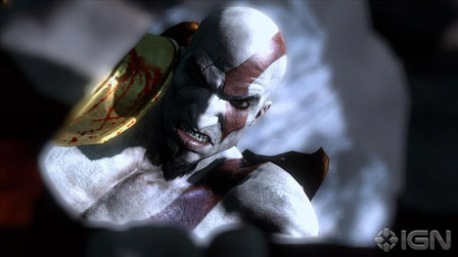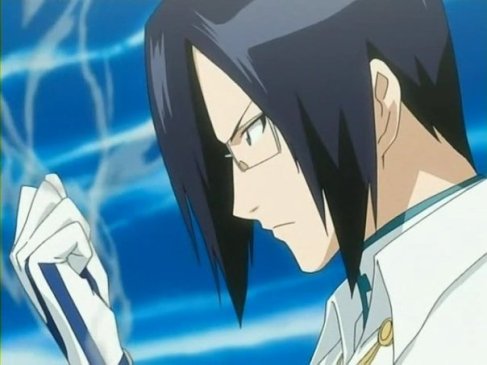When I compare a game to the Dynasty Warriors franchise, it throws up red flags for a lot of people. Although Dynasty Warriors popularized the “kill hundreds of enemies” formula with fast, easy-to-learn action, it’s lambasted for its repetitive combat and generic design. Bleach: Soul Resurreccion avoids these problems, in part, and makes endless hacking and slashing fun. As someone with a 50-episode familiarity with the Bleach anime, I shrugged aside my confusion over the incomprehensible campaign and enjoyed collecting Soul Points — it’s like glowing green money that dead people use!
Bleach: Soul Resurreccion follows the battles of Ichigo and the Soul Reapers as they fight against Aizen and his army of Arrancars. For those not in the know, Arrancars are nasty, evil spirits. Soul Resurreccion is spread across 14 story chapters, as well as extra missions that can be played with any of the characters you unlock along the way.
I had fun with Soul Resurreccion for plenty of reasons. The combat initially looks easy because most basic combos can be executed by mashing the Square button. There’s a lot more to it, though. With good timing, you can power up a normal combo. This gives you an incentive to do more than just pummel the same button for hours. Each character also has a bunch of special attacks that can be mixed into normal combos.
The subtleties of combat were clear to me after I spent a while experimenting with different techniques. With Ichigo I started by launching a few Spirit Attacks — which send arcs of energy tearing across the screen — and then transitioned into a basic combo. At the end of the basic combo, I launched my opponent up into the air, unleashed a few more basic attacks, and finished with a Super Move.
It’s not the most complex battle system out there, but Bleach: Soul Resurreccion gives you lots to do in the heat of combat. But beware, your enemies do fight back — especially at higher difficulty levels. You’ll need to keep your guard up at the right times, dash away from danger, and even counter attacks when you have access to the ability. It’s an engaging system and it facilitates the process of collecting Soul Points.
Yes, Soul Points are the sweet, sweet candy of Bleach: Soul Resurreccion. They’re green, they glow, and you don’t even have to run around to pick them up — they come to you when you defeat an enemy or destroy an object in the environment. Not only is it super fun to collect things, but Soul Points act as your currency for purchasing character upgrades. With enough Soul Points you can enhance your character and learn new techniques thanks to a stylish board similar to the Sphere Grid in Final Fantasy X (Anybody?).
Soul Points give combat purpose, and you’re rewarded for keeping up a combo with a Soul Points multiplier. This adds a degree of pressure to an already frantic, effects-heavy experience.
Speaking of repetitive, let’s talk about the environments. There are only three background types in the whole story, so even though the stage layout changes, the scenery does not. It gets boring, and pales in comprising to the stylish characters and animation.
Lastly, if you’re not already familiar with the story of Bleach, don’t expect to follow this. There are more names tossed around in the opening narration than you’d find in an actual book of baby names. Chapters blur together, gloss over massive amounts of material, and don’t do much besides contextualize the mayhem.
Read more on how I reviewed Bleach: Soul Resurreccion.
Bleach: Soul Resurreccion is easy to learn and fun to play, despite its incomprehensible story and repetitive backgrounds. It’s like Dynasty Warriors, but with a more enjoyable combat system that gives you tangible rewards for performing well.
If you’re up for some simple fun, Bleach: Soul Resurreccion might be worth a look. But you won’t be missing the experience of a lifetime if you decide to pass on it.
| Rating | Description | |
|---|---|---|
| out of 10 | Click here for ratings guide | |
| 6.0 | Presentation Convoluted, poorly-told story. The interface, however, is stylized and clean. |
|
| 7.0 | Graphics Sharp character models, fluid animation and some great special effects. Backgrounds, however, repeat often. |
|
| 6.5 | Sound The music is forgettable. Both English and Japanese voice tracks are available. Performances don’t have much impact on the experience. |
|
| 7.0 | Gameplay Fun combat complemented by a rewarding upgrade structure that encourages you to keep combos rolling. |
|
| 7.5 | Lasting Appeal I had the most fun grinding the extra missions for Soul Points. You could do this for a while before it starts to get old. |
|
|
7.0
OVERALL
|
Good
(out of 10)
|
|









